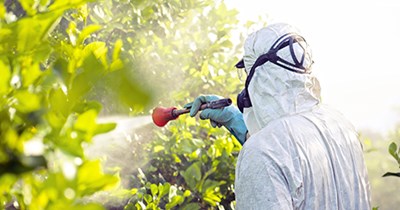White Paper: Hazardous Substances, A Baneful Business
Hazardous Substances Safety White Paper
A $250,000 fine dished out to a pest control fumigation service serves as a stark reminder of the dangers of working with hazardous substances.
Late last year WorkSafe New Zealand sentenced and fined Flick Anticimex Ltd for exposing its workers to highly toxic levels of methyl bromide, hydrogen cyanide and formaldehyde. By failing in its duty to provide staff with appropriate Respiratory Protective Equipment (RPE), the company had put them at risk of death or serious illness.
The WorkSafe investigation revealed that not only was RPE ill-fitting, but some workers didn’t wear it at all. Furthermore, staff hadn’t been adequately trained to clean and maintain the gear, and there were no systems in place to monitor employee exposure to toxic fumigants. Furthermore, Flick Anticimex was also spreading a wildly inaccurate myth that workers with facial hair should use Vaseline to improve mask fit.
“Workers wearing RPE should be clean shaven. Even a small amount of stubble can prevent a proper seal from forming. Vaseline does nothing to help this, and workers will still be wearing RPE which hasn’t formed a seal based on incorrect information from their employer,” says WorkSafe Manager Health & Technical Services, Api Poutasi.
Besides, as Api points out, businesses shouldn’t be relying on RPE as the main way to look after the health of their people.
“They need to consider the hierarchy of controls. This is a requirement under the Health and Safety at Work (General Risk and Workplace Management) Regulations 2016.”
These regulations clearly outline the general duties and risk management processes to be followed by PCBU (such as the supervision and training of workers, first aid, emergency plans and PPE), as well as the management of particular risks including remote or isolated work, fire or explosion hazards, raised objects and containers of liquids. The regulations also give an overview of duties relating to exposure monitoring, health monitoring and responsibilities around young people in the workplace.
To take a closer look go to: https://www.legislation.govt.nz/regulation/public/2016/0013/latest/DLM6727530.html
Safety ‘n Action National Training Director Nicholas Matzopoulos says as cases like this demonstrate, undertaking the right hazardous substances training is crucial.
“It’s vital for businesses and their workers to undertake hazardous substances training so
that they can identify the different classes of hazardous substances and the risks they
pose to workers and the environment,” says Nicholas.
“Safety ‘n Action delivers robust courses with hands-on practical training to ensure
students leave with knowledge that can be directly applied in their workplace. Our
trainers all have extensive knowledge of hazardous substances and come from industries
such as the Navy and Emergency Services, where dealing with spill management plays an
important role.”
There are a couple of different courses to choose from:
• Management and Handling of Hazardous Substances is a one-day programme geared towards those who take care of the management, storage, use, disposal and handling of hazardous substances in their workplace (such as store persons, supervisors and safety officers).https://www.safetynaction.co.nz/en/our-courses/coursecatalogue/management-and-handling-of-hazardous-substances/
• Hazard and Risk Management is a day-long course which focuses on assessing the level of risk associated with workplace hazards (regardless of industry), and identifying and preventing possible illness, injury or incident. Given the fact that one in three Kiwi businesses either manufactures, uses, handles or stores hazardous substances, it’s fair to say that this is a compelling option for a large number of people. https://www.safetynaction.co.nz/en/our-courses/coursecatalogue/hazard-and-risk-management/
“The majority of businesses have some form of hazardous substances in their workplace, so it’s important that everybody is aware of the regulations and their responsibilities,” explains Nicholas.
“Undertaking training with Safety ‘n Action - New Zealand’s leading provider of health and safety training - is a convenient and effective way to ensure not just that your business is compliant, but also that your staff are working in a healthy and safe environment.”

